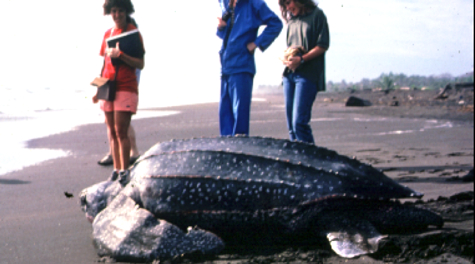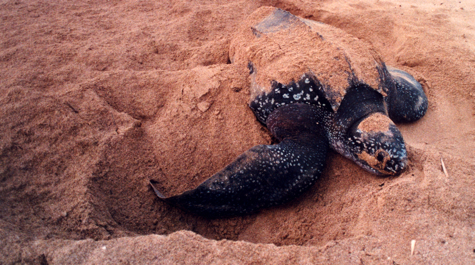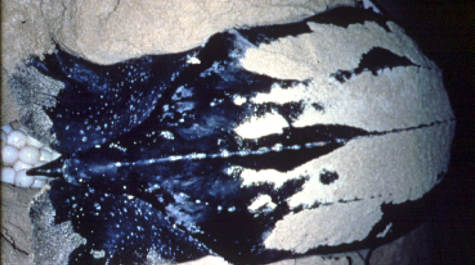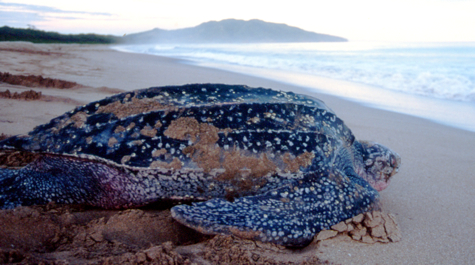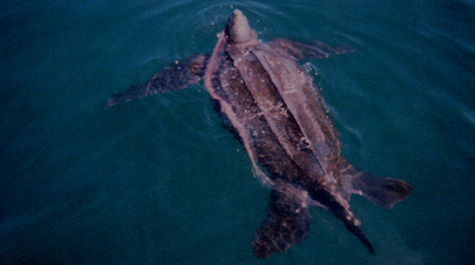Leatherback Sea Turtle
Leatherbacks (Dermochelys coriacae) are the world's largest, deepest-diving, and most migratory sea turtles and the third most abundant turtle in Virginia's waters. Adult leatherbacks can reach 4 to 8 feet in length and weigh 500 to 2,000 pounds. Leatherbacks are named after their leathery shells, which comprise a mosaic of small bones covered by firm, rubbery skin with seven longitudinal ridges or keels. Six to ten leatherbacks strand in Chesapeake Bay each year; these are all adults; the average length of leatherbacks in Virginia's waters is ~ 54 in (138 cm).
Status
"Endangered"; Pacific populations in crisis
Size
Largest sea turtles (6+ feet long), weighing up to 2,000 lbs
Sexual Maturity
Unknown
Nesting Habitat
Tropical beaches, some nesting in Florida; open beach
Juvenile Habitat
Unknown
Diet
Gelatinous species (jellyfish/squid)
Foraging Habitat
Coastal and ocean based


